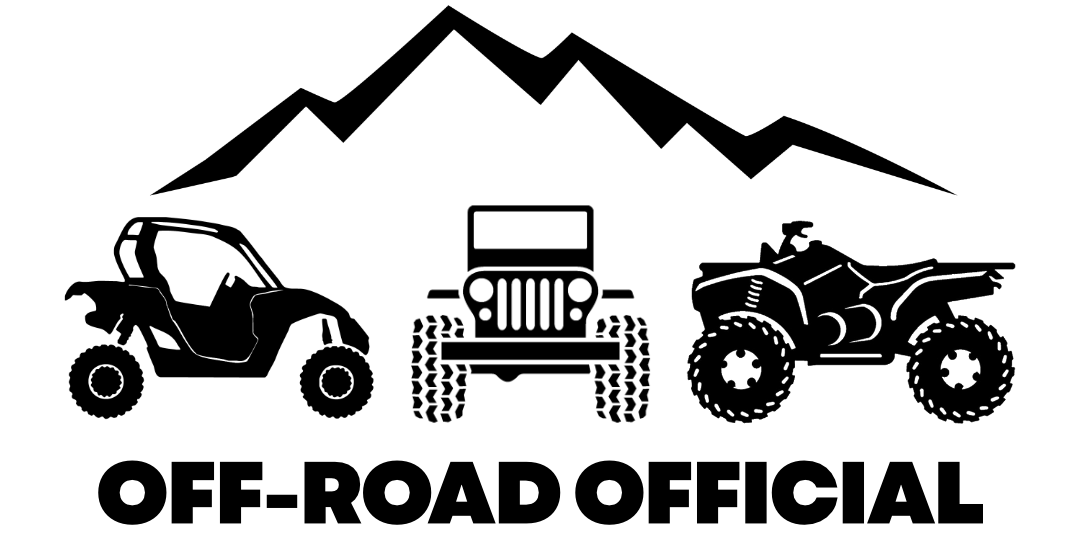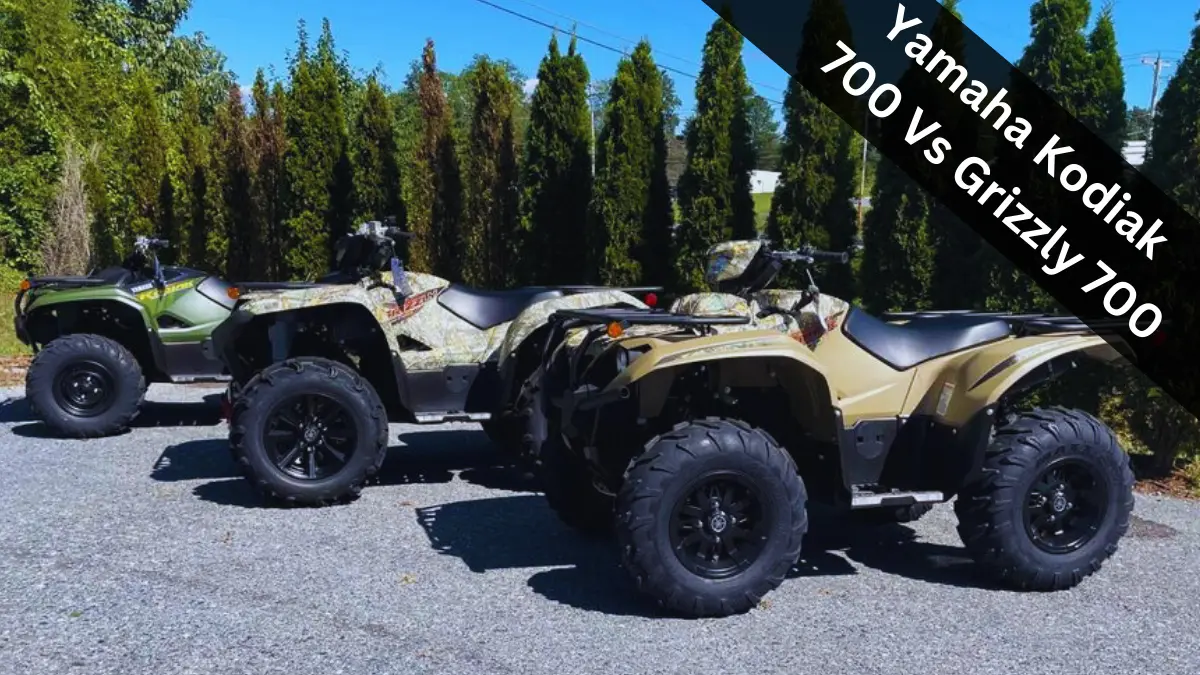The Yamaha Kodiak and Grizzly models are remarkably similar in a number of ways, with Yamaha using many of the same parts and components in both.
A review of the Kodiak 700 even highlights how a recent change to both models resulted in some reliability issues and owner complaints, and the modification Yamaha was forced to make to both models to alleviate this.
So with all of the similarity between them, you may be wondering what’s actually different about these two models.
And the answer to that is surprisingly: a lot more than you might think.
This guide will highlight the main differences between the two models, including:
- Which model offers the quickest acceleration
- Which model offers the fastest top-end speed
- Which model makes the better off-road and trail option
- Key differences in ergonomics
- Key differences in size
- Key differences in style
- Key difference in the braking systems
- The different prices
By the end of this guide, you’ll be able to narrow down whether the Yamaha Kodiak or Grizzly makes the most sense for you.
One Is Quicker While One Is Faster
Both the Grizzly and the Kodiak make use of the same 686cc Yamaha engine, so it may surprise you to find that these models’ are slightly different in terms of quickness and top-end speed.
There are two key differences when it comes to these models’ speed and acceleration.
Clutch Weights
The Kodiak uses slightly heavier 30-gram clutch weights compared to those within the Grizzly’s clutch.
While this helps to maximize the engine’s deep power ability and offers the best low-end grunt for towing and hauling, it also creates a lower engagement speed and slightly dampens the acceleration more than that of the Grizzly.
This leads to the Grizzly accelerating slightly faster than the Kodiak through the low to mid RPM ranges.

Tuning
The stock tuning and EFI fuel mapping is slightly different between the Kodiak and Grizzly, giving the Grizzly quicker response than the more mild response of the Kodiak.
This lends to the Grizzly’s ability to out-accelerate the Kodiak in the low to mid gears.
The good news for Kodiak riders is that you can swap in the Grizzly’s clutch weights and have your ECU tuned to put it on the same level.
Final Verdict
The Grizzly is slightly quicker than the Kodiak, but the Kodiak 700’s top speed is slightly higher than the Grizzly 700’s top speed when running the two wide open in their upper RPM ranges.
The Better Off-Road & Trail Riding Option
When it comes to low-end and overall power, the Grizzly and Kodiak are pretty darn similar since they use the same 686cc engine which they reverted back to after some common problems in the Kodiak 700 and Grizzly surfaced.
But one of these models does offer some advantages over the other on the trail which seem to give it an edge in most off-road terrain.
Different Tires
The Grizzly features slightly bigger 26-inch (27-inch on the Special Edition) tires than the 25-inch tires on the Kodiak models.
When you look at these machines side by side, one of the main things that stands out is the more aggressive tread pattern and overall look of the Grizzly’s stock tires.
The Grizzly’s bigger, wider tires give it more stability than the Kodiak while also lending to the Grizzly’s one-inch edge in ground clearance.
Better Ride
The more aggressive tires on the Grizzly give it better traction than the Kodiak has, which gives you more control in soft, slick terrain.
Don’t get me wrong, you’ll have no problem getting through muddy, snowy, sandy, and rough terrain on either model.
But you can tell an obvious difference between the two models while doing so, with the Grizzly steering and handling better.
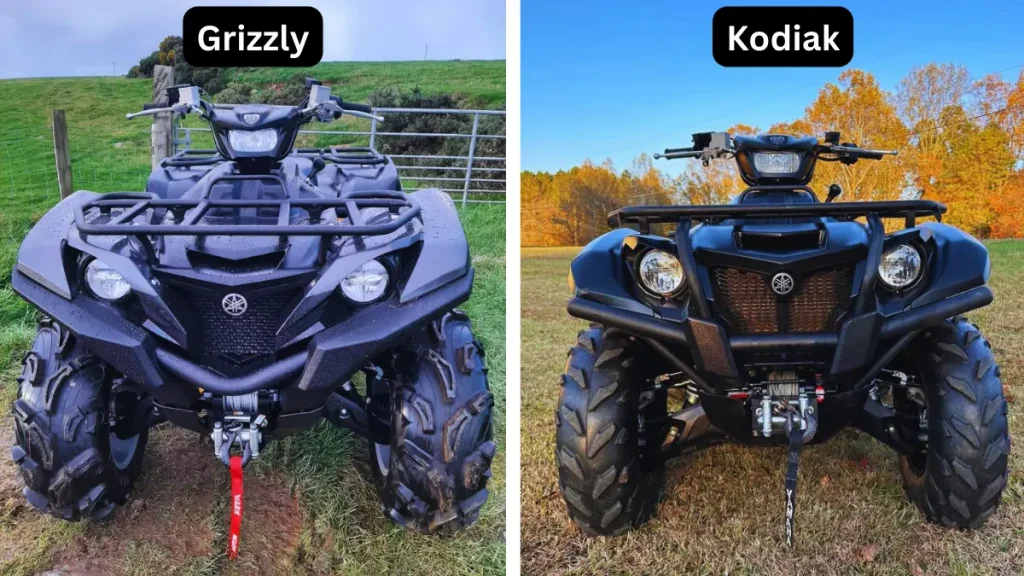
On the other hand, when you’re going through muddy, rutted terrain with the Kodiak, the terrain will control the direction you go more than the ATV itself will.
You’ll feel the tires slipping and giving way a little more in muddy and slick terrain while on the Kodiak, while the Grizzly’s more aggressive tires allow it to stay more firmly planted so you can truly steer in the direction you want to go.
And if you crawl over rocks or obstacles in the trail often, the Grizzly’s slightly better ground clearance means you’re at less risk of bottoming out.
The suspension systems are almost identical, though the Grizzly models do offer about a half-inch more travel in the front, which has little effect on the difference in the rides of the two.
Final Verdict:
The Grizzly is the better overall off-road and trail riding option, though you can’t go wrong with either model.
Yamaha Grizzly Vs Kodiak – Ergonomics
There are some slight differences between the two when it comes to ergonomics.
- The Grizzly’s handlebars are slightly taller than the Kodiak’s, making for a more upright riding position.
- The Grizzly’s seats have just a little more cushioning than the Kodiak’s.
- The Kodiak’s seat height is about a half-inch lower than the Grizzly’s, which makes it easier to climb on and off of if you’re doing work around your property.
Final Verdict
If you’re a bigger or taller rider, the ergonomics of the Grizzly are likely going to be just a bit more comfortable for you.
If you don’t shop in the Big N’ Tall section, the Kodiak and its lower seat height may be easier to throw your leg over.
Yamaha Kodiak Vs Grizzly – Size Difference
The dimensions and overall size of these two models is another factor that sets them apart.
The Grizzly models are just a bit bigger than the Kodiaks overall:
- Grizzly Width: 48.4 inches
- Kodiak Width: 46.5 inches
- Grizzly Height: 49.3 inches
- Kodiak Height: 48.8 inches
While minimal, the Grizzly is just a hair taller and a couple inches wider than the Kodiak.
You can see the difference in the widths when they sit side by side, but you can also tell after riding both of them that the Grizzly is just a bit more stable thanks to its width advantage.
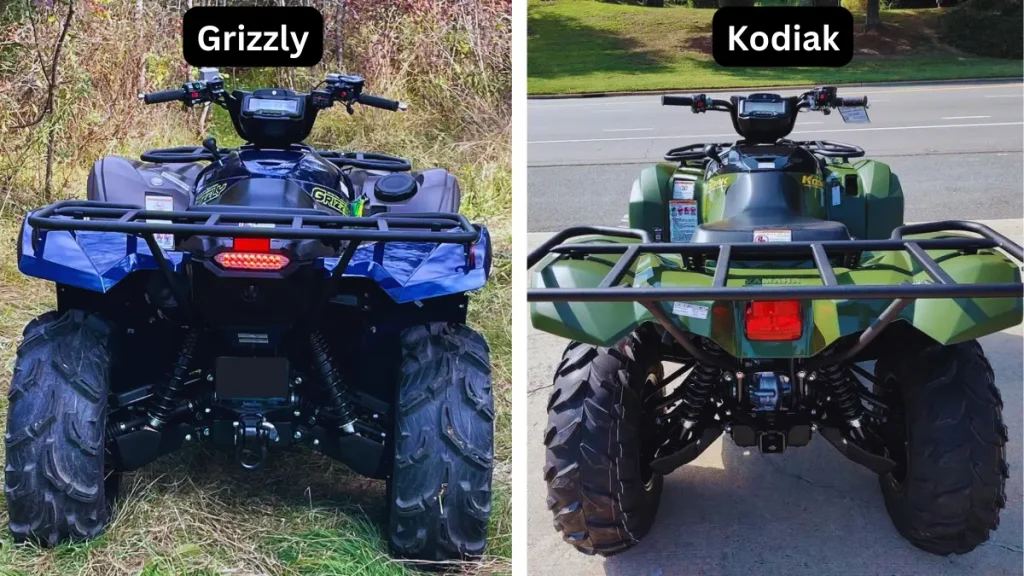
Yamaha Grizzly Vs Kodiak – Style Points
Both of these models offer a rugged yet stylish appearance, resembling that of your classic “tough-as-nails” utility ATV.
But the Grizzly does win in terms of style points.
The body styling and exterior features of the Grizzly look a little more modern and aggressive, with the bigger and wider tires adding to this.
The Kodiak looks a little more bland with more of an emphasis on being functional and simply getting the job done.
Even when you compare the Special Edition models, the Grizzly’s appearance is just a bit more appealing.
Yamaha Kodiak Vs Grizzly – Braking Systems
The two models make use of a different rear braking system, which has more of an impact than you might think it would.
The Grizzly is equipped with hydraulic disc brakes in the rear, while the Kodiak is equipped with a sealed wet braking system which mainly differ in two areas:
- The Grizzly’s rear disc brakes provide slightly better stopping power than the rear wet braking system of the Kodiak.
- But the Kodiak’s sealed wet braking system means that they are sealed which makes them less prone to damage from water, sand, caked mud or other debris and means they are essentially maintenance-free.
If you ride trails and mud often, the Kodiak’s rear braking system may cause you less trouble over time if you’re not good about cleaning out your brake system between rides.

Difference In Price For 2024
Yamaha Kodiak Pricing:
- Kodiak 700: $8,499
- Kodiak 700 EPS: $10,099
- Kodiak 700 EPS SE: $11,099
Yamaha Grizzly Pricing:
- Grizzly EPS: $11,399
- Grizzly EPS SE: $11,999
- Grizzly EPS XT-R: $12,399
- Grizzly EPS Camo: $12,499
There is no Grizzly base model to compare with the Kodiak 700 base model, but for the EPS models you’ll be paying anywhere from $900 to $1,400 more for a Grizzly when compared to a Kodiak.
Which One Is Best For You?
This really all boils down to three things:
- Your riding style
- Where you ride most often
- How much you want to spend
If you’re a more aggressive rider and like to be able to cruise through rough terrains at higher speeds while pulling off the occasional wheelie, the Yamaha Grizzly is probably the best fit.
If you’re good with taking it slower on the trails and don’t ride through deep mud all that often, plus just need a capable and convenient quad for tackling tough work tasks, the Yamaha Kodiak is probably right for you.
And lastly, if you don’t mind shelling out an extra $1,000+ for a slightly better and more appealing model…the Grizzly must look pretty good in your eyes.
But if you’d prefer to save $1,000 and still get a model that’s just as capable but with a little less flare when it comes to style, the Kodiak makes for a solid value.
Check out how they compare with some of the best ATVs for the money before you head out.
